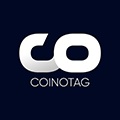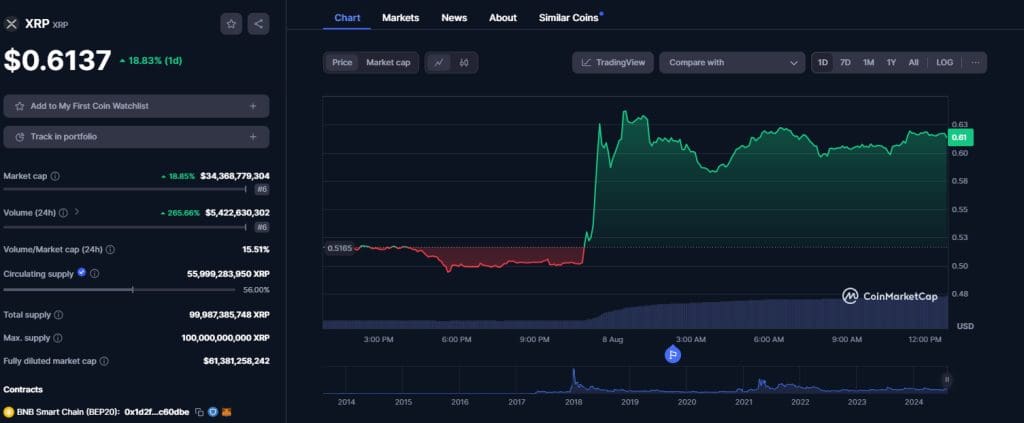Flash Loans Explained: Harnessing Their Potential
Flash loans are a type of loan that allows users to borrow crypto assets from a lender without putting up any collateral. Flash loans offer many advantages over traditional loan products, including the ability to access funds instantly, gain exposure to new markets and assets quickly, and avoid costly lending fees. As a result, they have become increasingly popular amongst traders seeking to take advantage of rapid market movements and capitalize on arbitrage opportunities.
What is a flash loan?
A flash loan is an uncollateralized loan taken out concisely (usually between one and ten minutes) using blockchain technology instead of signing contracts with traditional lenders. The borrower must repay the entire loan plus interest immediately after taking out the loan or risk losing their collateral. Although flash loans are unsecured and have a high risk of default, they offer tremendous benefits to traders looking to take advantage of rapid market movements and capitalize on arbitrage opportunities.
How do flash loans work?
Flash loans offer tremendous advantages to borrowers and lenders. They eliminate the need for collateral, allowing lenders to provide short-term financing in situations where traditional lending would be unavailable. The condition increases transactions’ speed, providing liquidity and access to capital.
Flash loans offer great potential for users to capitalize on lucrative opportunities quickly. Access to hundreds of millions of dollars of liquidity, arbitrage, liquidation, collateral swapping, and leveraged positions you can explore easily.
Although the scope for profit is considerable, you must consider the associated risks.
The varying levels of security in decentralized financial protocols require smart contract developers to understand the dangers of flash loans if developers have to build more robust applications for users.
Flash loan utility
Flash loans have multiple uses in decentralized finance. These include:
Flash loans arbitrage
Flash loans have revolutionized the traditional DeFi markets and services, allowing users to quickly utilize a high degree of capital. In addition, flash loans have permitted arbitrageurs to exploit previously untapped inefficiencies in the market; where an asset can be bought at one rate on one market and sold at a higher rate on another, these trades can generate significant profit with minimal risk.
By taking advantage of the speed offered by flash loans, these traders can quickly fill this gap by purchasing the asset on one market and selling it on another, thus pushing both markets closer to equilibrium. Not only does this increase profitability for arbitrageurs, but it also ensures liquidity to benefit everyone involved in DeFi trading.
Flashloan liquidations
Flash loans offer a unique and advantageous use case for liquidations. Many lending protocols focus on rewarding third-party liquidators to ensure their loans remain collateralized. When a loan finds itself under collateralization, a flash loan can facilitate fast capital injection to resolve the situation while preserving the underlying protocol’s solvency. Access to flash loans presents an efficient and cost-effective solution for preventing losses.
Collateral swaps
Flash loans provide many advantages for traders engaged in collateral swaps. For example, a flash loan allows users to quickly obtain funds to close an existing loan before immediately opening up a new loan with different collateral. They avoid the traditional methods of closing and reopening loans at separate times and with particular entities.
Flash loans can also simplify processes like creating leveraged positions and make transferring across protocols quicker and more efficient than ever. In short, flash loans are revolutionizing how traders manage assets and execute transactions.
How to execute a flash loan
To interact with a flash loan lender, borrowers must create a smart contract that contains three parts; borrowing the loans, interacting with other smart contracts for other operations, and returning the loan once complete.
The process consists of five steps,
- The loan provider transfers the requested assets to the borrower.
- The user invokes pre-defined operations on the blockchain and interacts with smart contracts to execute functions such as arbitrage or liquidation with the borrowed assets.
- The contract returns the borrowed funds with or without any additional assets gained from these operations.
- The loan providers check their balance – if the repaid amount isn’t enough, they reverse the transaction immediately.
List of platforms that allow flash loans
Flash Loans are gaining traction as financial tools and technology progress. Those without coding knowledge can take advantage of flash loans. Some user-friendly tools enable users to benefit from Flash Loans, like Collateralswap, Defisaver, and Furucombo, which provides a user interface that makes it possible to use Flash Loans even if you don’t know how to code.
Platforms that allow flash loans include:
1. Uniswap – It is a decentralized exchange protocol that allows users to trade cryptocurrencies without the need for an intermediary. It also makes it possible to initiate flash loans.
2. Aave – Aave is a decentralized money market protocol that allows users to borrow and lend digital assets and use flash loans.
3. Compound – Compound is a decentralized lending platform that enables users to borrow and lend digital assets and utilize flash loans.
4. DyDx – DyDx is a decentralized exchange protocol that allows users to trade cryptocurrencies without an intermediary and use flash loans.
Benefits of Flash Loans
Flash loans offer several advantages over traditional loan products, including:
1. Instant access to funds – Flash loans allow you to quickly access the crypto assets you need without waiting for the slow process associated with traditional loan applications.
2. Low cost – Because no middlemen are involved in the process (such as banks), there is a much lower cost associated with taking out a flash loan than with traditional loan products.
3. Gain exposure to new markets and assets – With a flash loan, you can quickly access new markets and assets without waiting for the slow process associated with traditional loan applications.
4. Avoid costly lending fees – Because there are no middlemen or lengthy paperwork associated with the process, taking out a flash loan avoids paying the expensive fees associated with traditional loans.
Flash loan attack vectors
Due to their unique nature, flash loans make attractive targets for malicious actors. Flash loan attackers can exploit loopholes in DeFi protocols by creating transactions that result in a profit while negatively affecting the underlying protocol’s security.
These attacks can be challenging to detect and mitigate due to their high speed and complexity. To prevent these attack vectors from occurring, developers should continuously monitor and audit the codebase of their protocols. Additionally, developers should implement strict security measures to prevent malicious actors from exploiting any flaws or loopholes in the code.
Example of a Flash loan attack
A successful example of a flash loan-funded attack on a DeFi lending protocol requires a few key steps to be carried out by an attacker.
- The attacker must take out the flash loan in token A from the protocol and then swap it for token B on a DEX to manipulate the spot price – this lowers the spot price of token A while raising that of token B.
- After this, they deposit their newly purchased token B as collateral on a DeFi Protocol that uses the DEX spot price feed as its sole oracle. As a result, they can borrow more token A than would otherwise be allowed because of the manipulated spot price.
- The attacker uses part of their newly acquired tokens to pay back their original debt and keep whatever is left over from the transaction, resulting in profits made using the maliciously tampered spot price oracle.
DeFi protocols that use a single spot price oracle are vulnerable to potential attackers who can exploit such protocols without fully understanding the repercussions.
As seen in the example, an attacker could open a flash loan and manipulate the exchange by raising the reported value of the token used as collateral and lowering the declared value of the token used as debt, resulting in a position where the exchange cant fully liquidate. This attack has immediate consequences and can be repeated across multiple transactions, furthering the damage. Fortunately, implementing a decentralized oracle solution with proper market coverage is enough to prevent these attacks from being successful.
Conclusion
Flash loans have been a game changer for the DeFi space, allowing users to access funds quickly without going through the slow process associated with traditional loan applications. However, their unique characteristics make them attractive targets for malicious actors who can exploit loopholes in DeFi protocols and cause significant damage.
Developers must continuously monitor and audit their codebases to secure protocols from potential flash loan attacks. Additionally, they should consider implementing a decentralized oracle solution as this can provide more reliable price data that is less vulnerable to manipulation.





